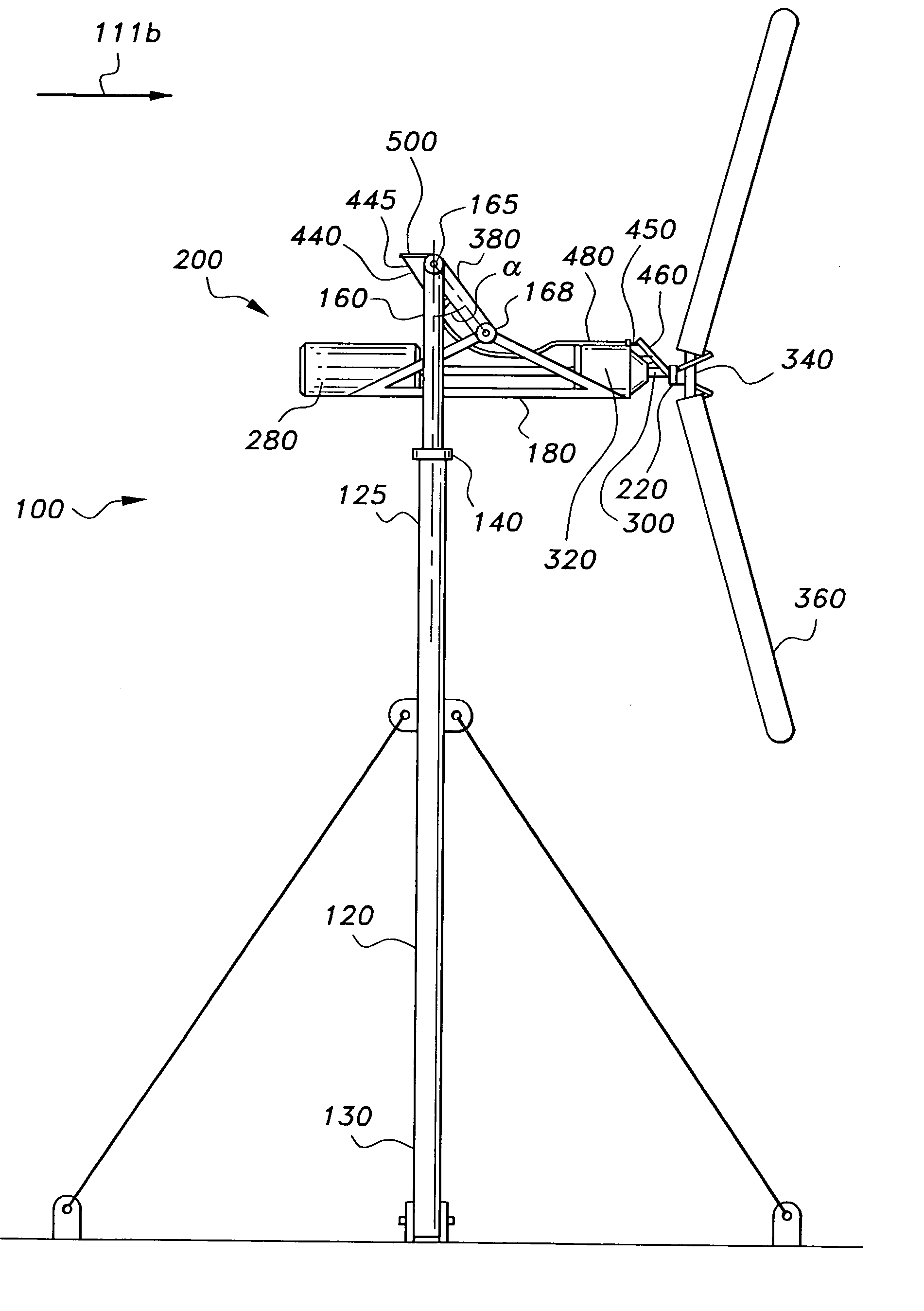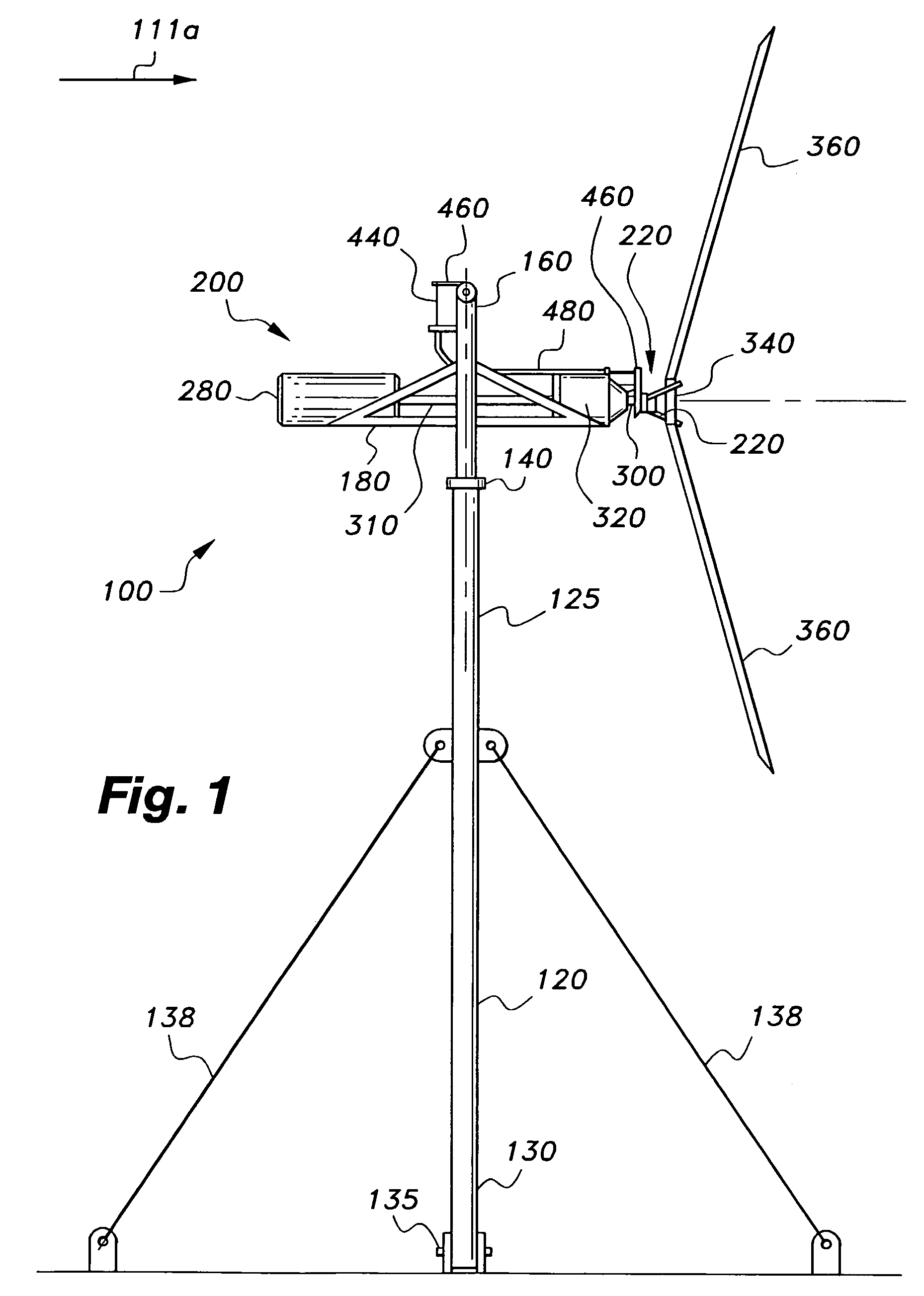Downstream wind turbine
a wind turbine and downstream technology, applied in the field of wind turbines, can solve the problems of wind turbines being vulnerable to severe damage, runaway incidents, and adding chemical pollutants to the environmen
- Summary
- Abstract
- Description
- Claims
- Application Information
AI Technical Summary
Benefits of technology
Problems solved by technology
Method used
Image
Examples
Embodiment Construction
[0041]The present invention is directed to a downstream wind turbine for converting wind energy into electrical energy and, more specifically, to a downstream wind turbine 100 adapted to respond to high winds and gyroscopic precession.
[0042]FIG. 1 is side view of a downstream wind turbine 100 according to the present invention. The downstream wind turbine 100 is shown operating in ambient wind conditions. Wind condition and direction are represented by alpha-numeral “111a”.
[0043]Still referring to FIG. 1, the downstream wind turbine 100 comprises an approximately vertical support tower 120 having a top 125 and bottom 130, a yaw bearing 140 attached to the top 125 of the tower 120, a support frame 160, an elongated carry member 180 pivotally attached to the support frame 160, wherein the carry member is free to swing away and downstream from the support tower 100 or support frame 160 (see FIG. 2A), a wind driven energy conversion system 200 balanced on and firmly attached to the car...
PUM
 Login to View More
Login to View More Abstract
Description
Claims
Application Information
 Login to View More
Login to View More - R&D
- Intellectual Property
- Life Sciences
- Materials
- Tech Scout
- Unparalleled Data Quality
- Higher Quality Content
- 60% Fewer Hallucinations
Browse by: Latest US Patents, China's latest patents, Technical Efficacy Thesaurus, Application Domain, Technology Topic, Popular Technical Reports.
© 2025 PatSnap. All rights reserved.Legal|Privacy policy|Modern Slavery Act Transparency Statement|Sitemap|About US| Contact US: help@patsnap.com



